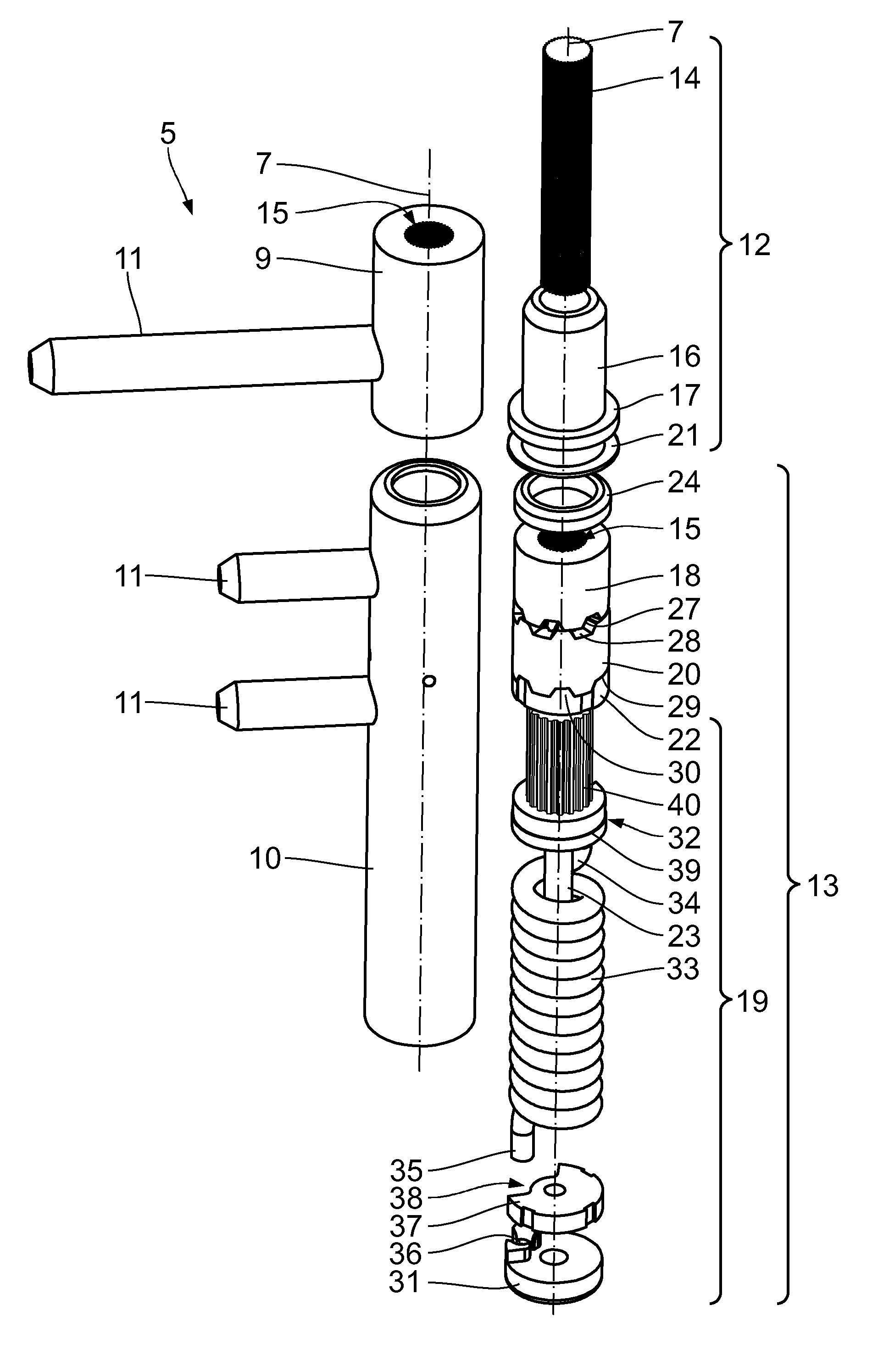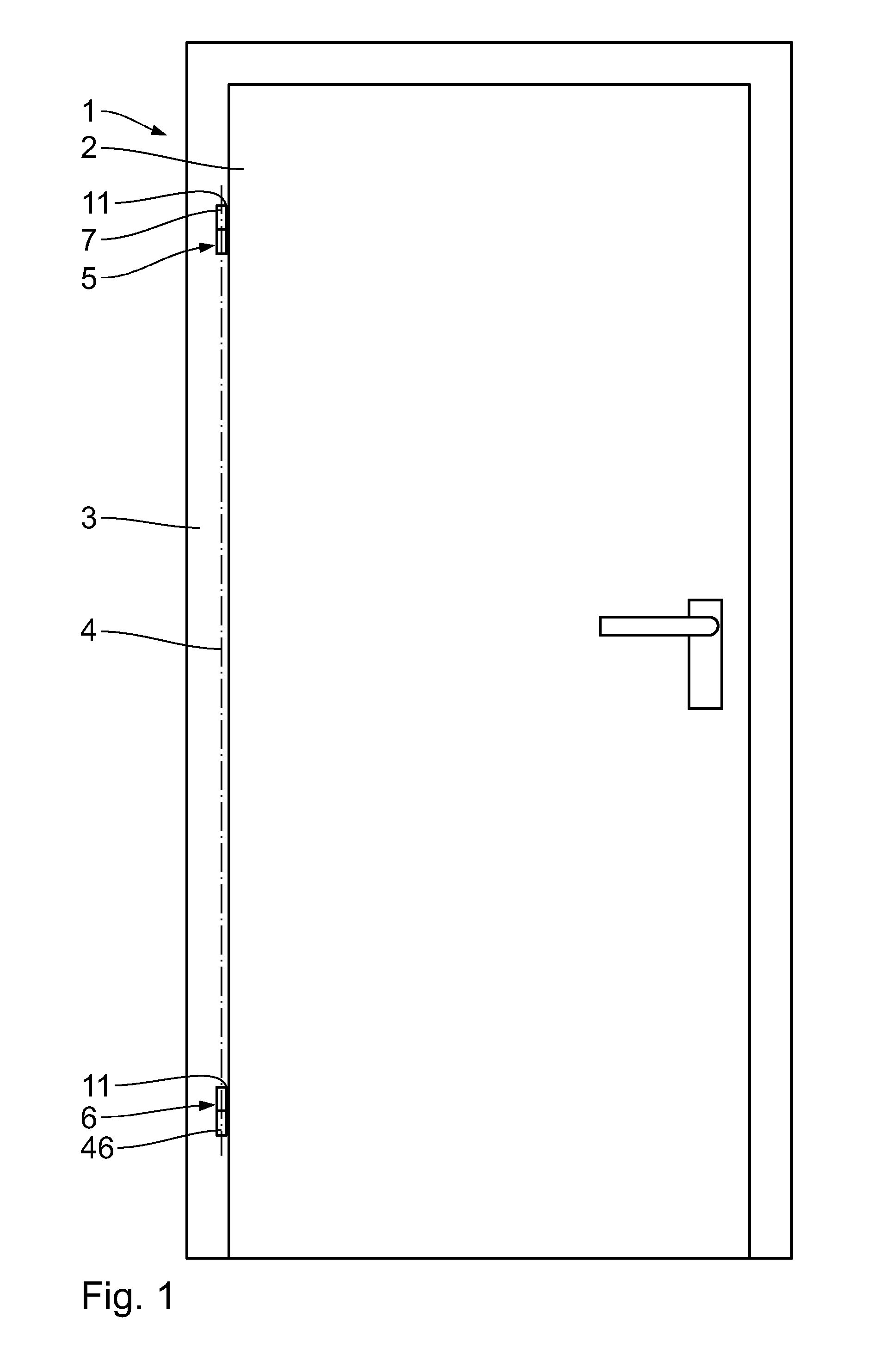Closing hinge
a hinge and hinge body technology, applied in the field of closing hinges, can solve the problems of laborious production, impaired handling impair the appearance of the door arrangement, so as to improve the closing characteristic, improve the closing force, and improve the effect of reliable door closing
- Summary
- Abstract
- Description
- Claims
- Application Information
AI Technical Summary
Benefits of technology
Problems solved by technology
Method used
Image
Examples
first embodiment
[0108]The damping hinge 6 will be described in more detail below in accordance with a first embodiment with the aid of FIGS. 8 to 11. The damping hinge 6 has a hollow cylindrical damping hinge housing 47 with respect to a rotational axis 46, with a damping hinge housing lower part 48 and a damping hinge housing upper part 49. The damping hinge 6 is also called a band with the damping function. The band with the damping function has the two housing parts 48, 49 and is configured as a two-part band. The damping hinge 6 is arranged with the rotational axis 46 concentrically with respect to the pivot axis 4 of the door arrangement 1. In accordance with the closing hinge 5, the damping hinge 6 also has a cylindrical housing 47 with an external diameter of 16 mm and a length along the rotational axis 46 of 130 mm. A housing 47 of this type substantially corresponds to the housing size of a hinge used as standard to connect a door leaf to a door frame. The use of the closing hinge 5 and th...
fourth embodiment
[0145]a damping hinge will be described below with reference to FIGS. 19 to 23. Structurally identical parts receive the same reference numerals as in the first three embodiments, to the description of which reference is hereby made. Structurally different, but functionally similar parts receive the same reference numerals with a “c” placed thereafter.
second embodiment
[0146]The damping hinge 6c is configured as a three-part band like the damping hinge 6b according to the The essential difference compared to the above-described embodiments is that the profile portion 52c provided in the damping hinge housing upper part 49c has an entraining portion 87 and a freely running portion 88 arranged in an adjacent manner along the rotational axis 46. The entraining portion 87 is configured in such a way that it has a cross-section, which is oriented perpendicular to the rotational axis 46 and has a non-round internal contour 89 with respect to the rotational axis 46. The non-round internal contour 89 corresponds with the external contour of the rotating entrainer arranged on the axial element 63c, which has three entrainer webs 78 directed radially outwardly along the outer periphery with respect to the rotational axis 46. Since the external contour of the rotating entrainer with the entrainer webs 78 corresponds to the internal contour 89, the axial ele...
PUM
 Login to View More
Login to View More Abstract
Description
Claims
Application Information
 Login to View More
Login to View More - R&D
- Intellectual Property
- Life Sciences
- Materials
- Tech Scout
- Unparalleled Data Quality
- Higher Quality Content
- 60% Fewer Hallucinations
Browse by: Latest US Patents, China's latest patents, Technical Efficacy Thesaurus, Application Domain, Technology Topic, Popular Technical Reports.
© 2025 PatSnap. All rights reserved.Legal|Privacy policy|Modern Slavery Act Transparency Statement|Sitemap|About US| Contact US: help@patsnap.com



